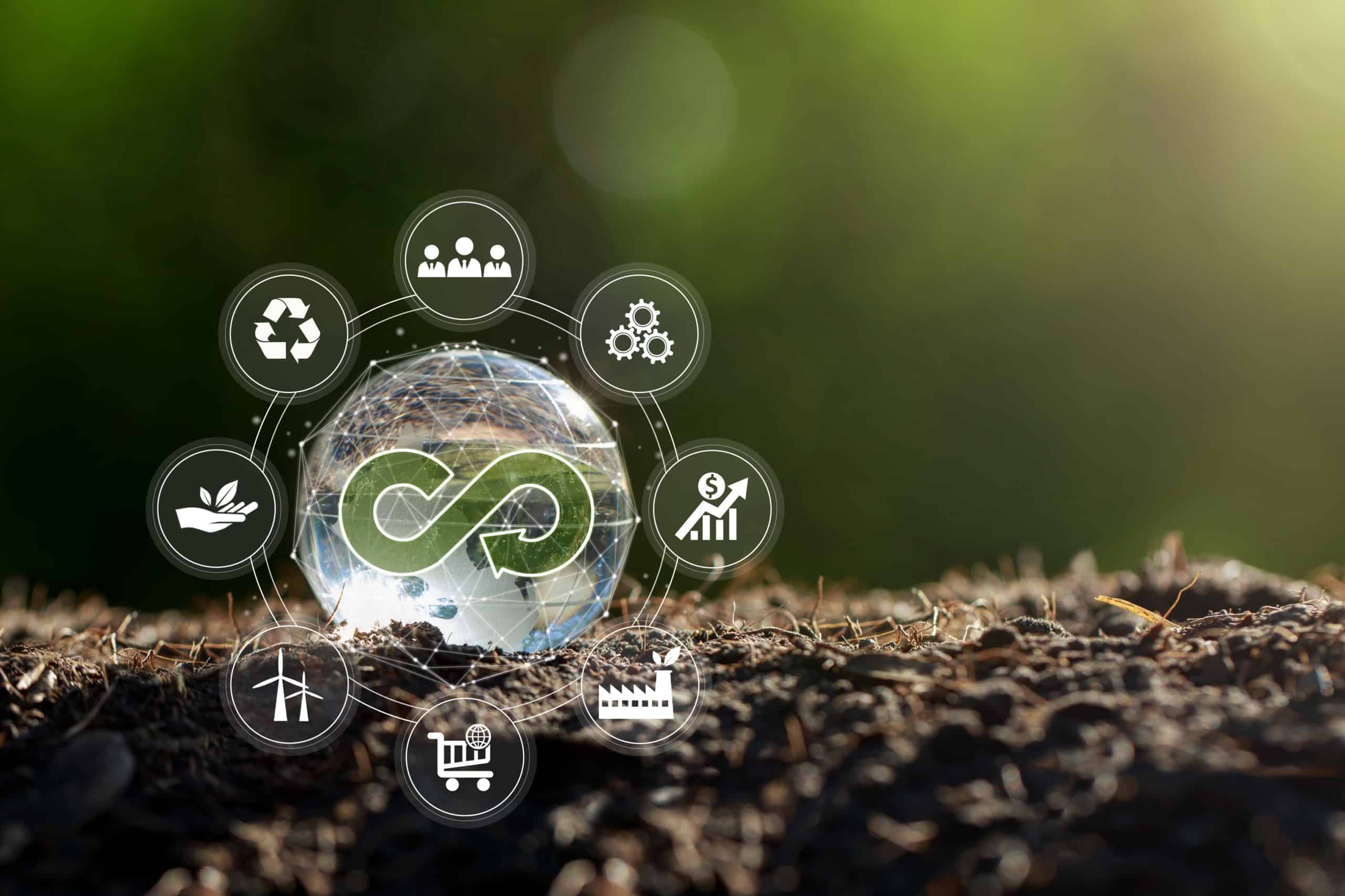Sustainability is the trendiest topic for businesses in various industries in 2023. It improves the quality of people’s lives, preserves natural resources, and protects the ecosystem. The question is: how the corporate world can play its role in improving and maintaining sustainability?
Businesses look for ways to prioritize sustainable practices in 2023. However, most companies fail to implement a sophisticated, long-term strategy to overcome environmental, social, and governance (ESG) challenges. So, there is a need for a thorough and holistic approach to creating a safe and livable future for everyone.
Sustainable practices can streamline your business operations and reduce long-term energy costs. For example, when you switch to energy-efficient lighting, you can reduce long-term energy or electricity costs.
Likewise, wind and solar energy can lower monthly utility bills. Today’s article will discuss evidence-based details on sustainability for businesses in 2023. Read on!
Climate Change Mitigation
According to the IPCC assessment report, global temperatures increased about 1.1 degrees Celsius or 1.98 degrees Fahrenheit between 1901 and 2020. However, climate change refers to a significant increase in temperature, leading to a rise in sea level, changes in weather patterns like flooding and droughts, etc.
Climate change affects everything humans depend upon and value. These include energy, water, wildlife, transportation, ecosystems, agriculture, and health. Climate change affects various societal sectors.
For example, droughts can harm food production, significantly damaging human health. Floods can spread diseases and damage infrastructure and ecosystems. Human health problems can elevate mortality, affect food availability, and minimize worker productivity.
Bear in mind that climate change’s effects are uneven worldwide. For instance, it is uniform in a single city or community and differs between neighborhoods and individuals.

According to the National Climate Assessment, socioeconomic inequalities can increase exposure to hazards in underserved groups. The report highlights that third-world countries have fewer resources and tools to respond to climate change, making them more vulnerable to crisis.
However, companies must substantially reduce their carbon footprint and protect the environment. The purpose is to create a more sustainable future. Here are a few ways businesses can reduce their overall carbon footprint and streamline their operations while positively impacting the environment and society.
Recycle and Reuse
Implementing “recycle and reuse” in your business strategy is an excellent way to lower the carbon footprint. Focus on sustainable procurement to reduce consumption of hazardous materials like plastic.
For example, you can encourage employees to use second-hand or refurbished laptops and smartphones. Likewise, instead of buying new furniture manufactured from cutting trees, you can invest in second-hand office furniture.
So this will help you save money and reduce waste. Reducing food waste is also essential. According to UNEP, food production, transportation, and management are directly proportional to greenhouse gas emissions, especially when food waste is in landfills.
UNEP reports that food in landfills generates methane within 15 to 20 years. Methane is 80 times more potent and hazardous than carbon dioxide, leading to global warming and climate change.
So, it would help if you took appropriate actions to lower food waste. We recommend setting up a composting program or buying from businesses that support local producers. The purpose is to minimize transportation, conserve fuel, and promote sustainability.
Renewable Energy
Switching to renewable energy is one of the most effective and quickest ways to reduce the carbon footprint. Most suppliers offer green energy contracts or tariffs, meaning you can have the correct amount of energy for your business.
Renewable energy is an excellent way to reduce the harmful impact on the planet and promote sustainability. For instance, the more businesses signup for renewable energy contracts, the more energy returns to the grid. You can source renewable energy from hydroelectric power, solar farms, and biomass plants.
Remote Working Model
According to the International Energy Agency (IEA), remote work is a reliable way to reduce the carbon footprint because people who commute to work by car 3.7 miles on-way can generate significant emissions.
On the other hand, remote work can reduce emissions regardless of increased energy utilization at home. So, your company must adopt this working style to reduce emissions and contribute toward improving the environment.
Circular Economy
Having a circular economy can benefit your business in various ways. First, it focuses on decreasing waste and pollution through the repair, reuse, and reduction model. Second, it focuses on restoring the natural systems and creates favorable conditions for supporting regeneration.
For instance, electrical devices are easier to repair, and manufacturers can reuse products and raw materials. So, a circular economy is critical to managing the planetary crisis on biodiversity, pollution, and climate.
A circular economy keeps resources in the loop for an extended period, allowing businesses to avoid emitting greenhouse gas emissions caused by the energy required for making products.
According to IMPACX, implementing a circular economy in a company can benefit the environment while allowing the business to flourish through ESG initiatives, improving the overall bottom line.

Reducing waste and pollution, keeping raw materials and products in use, and focusing on regenerating natural systems are reliable ways to improve your business sustainability and leverage new growth opportunities. Here are the steps to prioritize a circular economy for your business.
Step 1: Evaluate Your Business Needs
Before implementing a circular economy, you must assess your business needs and current situation. The purpose is to identify problematic areas and look for elements or aspects that require improvement. So, this may require you to analyze your company’s production processes, supply chain, and waste management practices.
Step 2: Redesign Your Products
A circular economy requires a business to design and redesign its products. The primary objective is to ensure the product’s efficiency, reliability, quality, and longevity. Creating easy-to-repair, recyclable, and reusable products at the end of their life is essential to achieving a circular economy and sustainability.
Step 3: Implement a Closed-Loop Supply Chain
A closed-loop supply chain is another way to streamline your business’s circular economy. It requires you to use and reuse resources for an extended period through recycling, refurbishing, or repurposing materials and products. So, implementing a closed-loop supply chain can make your business more sustainable and eco-friendly.
Step 4: Educate Your Staff
You must educate your employees, customers, and other stakeholders about the circular economy to create a sustainable culture within your business. Provide your employees with evidence-based training on sustainable practices and communicate the advantages of the circular economy to your customers. You can also provide incentives to your employees for adopting and practicing sustainable behavior in the workplace.
Supply Chain Sustainability
A sustainable supply chain can improve the productivity of a business and streamline its operations, leading to efficiency, reliability, and profitability. At the same time, it reduces risks and saves you money.
Sustainable resources and techniques can increase buildings, vehicles, and machinery’s efficiency at a substantial cost saving. For example, a world-renowned company, Nike, has adopted and implemented a sustainable supply chain model.
The world’s best shoe manufacturing company reduced material use by 20% and labor costs by 50%. The sustainable approach led to a 0.25% increase in profit margins. Let us discuss how you can adopt and implement sustainable supply chain strategies or practices.
Green Logistics Model
You can adopt a green logistics model to streamline your supply chain operations. It requires you to use eco-friendly transportation and distribution methods. You can reduce your company’s carbon footprint through electric or hybrid vehicles. We recommend optimizing delivery routes and reducing packaging waste to maintain optimal and environmentally friendly logistics.

Sustainable Materials Sourcing
In addition to adopting and maintaining green logistics, your company must develop a strategy for sourcing materials and products from sustainable suppliers. So, this requires you to work with certified suppliers that use renewable energy and recycled materials.
It’s also recommended to have a supplier code of conduct to provide guidelines and standards for your suppliers to respect in terms of safety of work conditions, labor practice, environmental impact, and ethics.
Waste Reduction
Minimizing waste throughout your supply chain operations is an excellent way to achieve sustainability. You can design products with recyclable and reusable features. At the same time, we recommend reducing packaging waste and implementing a program for waste reduction in your manufacturing facility.
Measure and Report on Supply Chain Sustainability Performance
You can track various metrics to measure your supply chain sustainability performance. First, your company’s carbon footprint is a critical metric to calculate the total amount of greenhouse gas emissions during the production and distribution of products.
Supply chain sustainability also requires you to optimize water usage. You can measure water usage to identify areas to improve water conservation. We recommend collecting and analyzing historical and real-time data on the quantity of water used in producing and transporting goods to gain valuable insights and make informed decisions.
Moreover, you can track the quantity of waste generated throughout the supply chain to measure this metric and optimize the process. You must measure solid waste and wastewater to gain accurate results.
Measuring supplier performance is another method to achieve supply chain sustainability. You can evaluate suppliers based on their ESG initiatives and practices. You can use suppliers’ scorecards, rankings, and ratings to track their performance and identify areas for improvement.
Reporting on supply chain sustainability is critical for businesses. It requires companies to collect and present data concisely, clearly, and transparently without redundancy or loopholes. We recommend the following steps to report on supply chain sustainability:
- Identify key metrics
- Collect and analyze data
- Report findings
- Set goals based on findings
Social Responsibility
Social or corporate social responsibility is integral to a company’s sustainable strategy. It requires businesses to conduct operations ethically while focusing on social, economic, cultural, and environmental issues.
According to Boreal, 75% of consumers do not prefer companies with unethical and irresponsible behavior. These consumers post negative reviews online and run organized campaigns on social media, boycotting the business or company.
In addition, irresponsible companies or businesses that fail to fulfill their corporate social responsibility lose 39% of their customers. 83% of investors prefer companies that strive to optimize their social responsibility. According to Triple Pundit, ISO 26000 has defined seven principles for companies to streamline their corporate social responsibility. These are:
- Accountability
- Transparency
- Ethical Behavior
- Respect for the rule of law
- Respect for stakeholder interests
- Respect for human rights
- Respect for international norms of behavior
Diversity and Inclusion Initiatives
Your company can prioritize social responsibility through a diversity and inclusion model. So, you must create a workplace culture in your company to ensure the inclusiveness and respectfulness of all employees, regardless of their background, religion, language, and identity.
We recommend conducting diversity training for managers and employees and implementing hiring methodologies focusing on diversity. In addition, create employee resource groups and provide equal opportunities for career growth and advancement for all workers.

Fair Labor Practices
Social responsibility requires businesses to implement fair labor practices. Companies focusing on transparent, honest, and labor-oriented strategies can create a respectful culture. Not only do all employees respected, but they also receive fair wages for their work.
We recommend implementing employees’ standards, protocols, and codes of conduct. Carry out audits to determine whether labor practices in your company align with those standards.
Similarly, providing healthy working conditions, fair wages, and benefits for employees, including teams in the supply chain, can increase your social responsibility rating and improve your brand reputation.
Technology and Innovation
Technology plays a critical role in the sustainability of your company. It improves efficiency, reduces environmental impact, and promotes sustainability practices. You can use cutting-edge technologies to monitor and manage water and energy consumption and optimize supply chain operations through waste reduction.
Research shows smart building system with automatic lighting and heating adjustment based on occupancy and weather conditions is an excellent way to achieve sustainability. Likewise, blockchain technology offers traceability, efficiency, and transparency in supply chain management.

In addition, technology allows companies to collect and analyze historical and real-time data on their sustainability performance. So this enables you to improve metric measurement, analysis, and reporting to stakeholders. According to the Institute of Entrepreneurship Development (IED), some of the reliable technologies businesses can implement to improve their supply chain operations are:
- Renewable energy systems
- Rainwater harvesting techniques
- Paper-free operations
- Biodegradable plastic
- Environmentally friendly equipment
- Electric vehicles
- Wireless power transfer
- Energy-efficient data centers
- Internet of Things (IoT) devices for tracking energy consumption
In addition, choosing the right technologies for a business requires you to identify your goals, evaluate your business operations, and research available options. You must consider scalability, engage stakeholders, and monitor/measure results to make data-driven and informed decisions.
For example, the Department of Energy highlights that energy-efficient LED lighting is an excellent way to achieve sustainability. The report shows that LED lighting will replace traditional incandescent bulbs and reach a market share of 84% by 2030.
Final Words
Businesses that fail to adopt, implement, and maintain a sustainable strategy may not survive in the future. The global community shows concerns about social responsibility and environmental issues, and consumers demand sustainable products and services.
At the same time, sustainability offers numerous benefits to companies, from cost saving to reducing waste to achieving efficiency and improving the bottom line. Follow the evidence-based techniques or methods in this post to develop and maintain a sophisticated approach toward sustainability.









